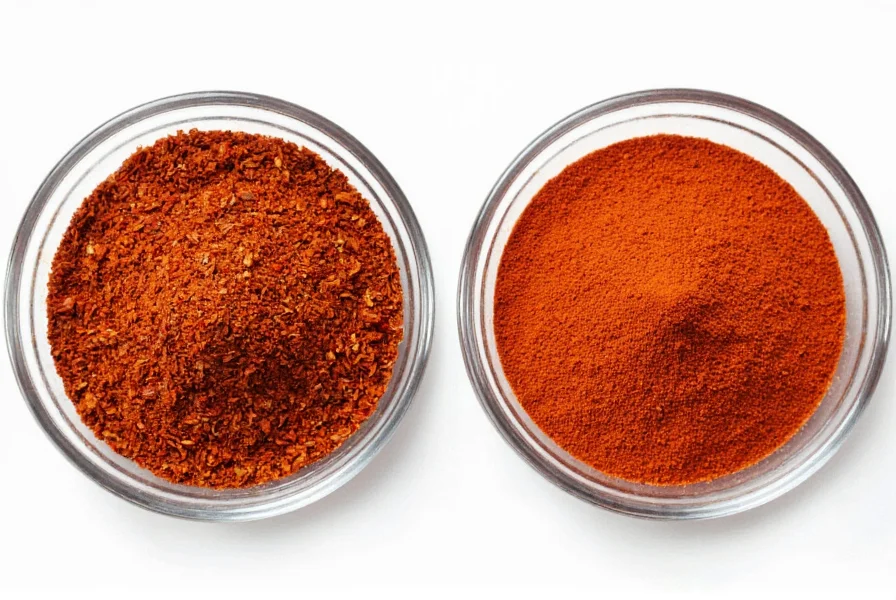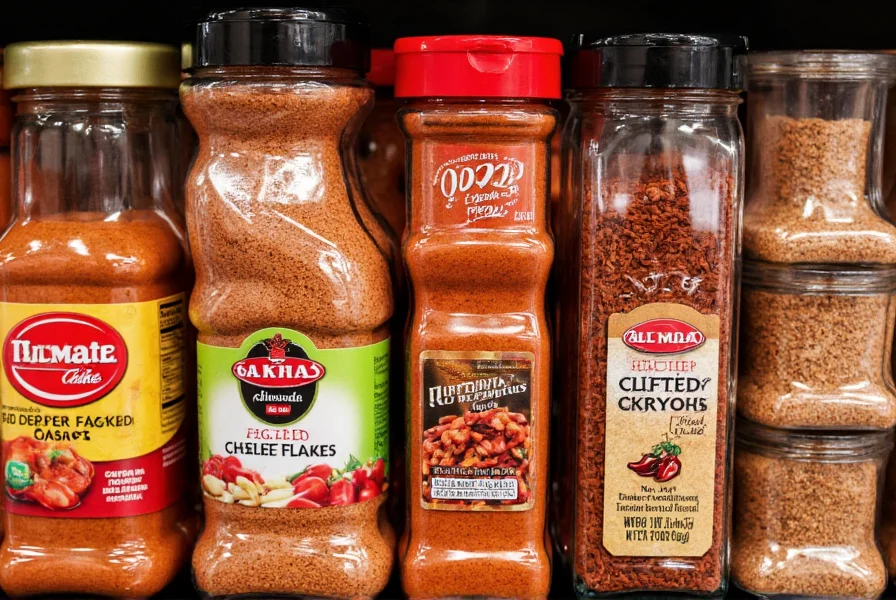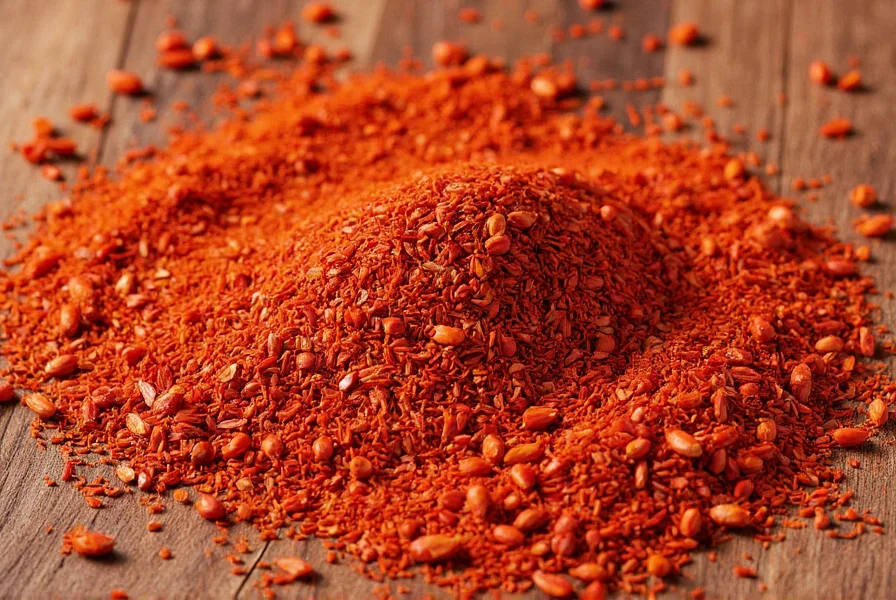When you're following a recipe that calls for red pepper flakes or chili flakes, understanding whether these ingredients are interchangeable can make or break your dish. This comprehensive guide examines the subtle distinctions between these pantry staples, their flavor profiles, and when you can safely substitute one for the other.
Understanding the Terminology
The confusion between red pepper flakes and chili flakes stems primarily from inconsistent labeling practices across different regions and manufacturers. In most American grocery stores, what's labeled as "red pepper flakes" typically refers to crushed dried cayenne peppers. These provide a consistent medium heat level with subtle fruity notes.
Meanwhile, "chili flakes" can sometimes indicate a blend of different chili varieties, potentially including ancho, guajillo, or other regional peppers. This variation explains why some chili flakes might taste noticeably different from standard red pepper flakes.

Key Differences Between Red Pepper Flakes and Chili Flakes
While often used interchangeably, several factors distinguish these products:
| Characteristic | Red Pepper Flakes | Chili Flakes |
|---|---|---|
| Primary Ingredient | Crushed cayenne peppers | May contain multiple chili varieties |
| Heat Level (Scoville) | 30,000-50,000 SHU | Varies widely (5,000-50,000+ SHU) |
| Flavor Profile | Sharp, clean heat with slight fruitiness | Can range from smoky to earthy depending on blend |
| Common Usage | Italian-American cuisine, pizza, pasta | Global applications, varies by regional recipe |
| Color | Bright red | May range from deep red to darker burgundy |
Regional Naming Conventions Explained
The distinction between red pepper flakes and chili flakes largely depends on where you live and shop. In the United States, "crushed red pepper" has become the standard term for the cayenne-based product commonly found in shaker bottles at pizzerias. This product typically contains only cayenne peppers, salt, and sometimes silicon dioxide as an anti-caking agent.
Internationally, the terminology shifts significantly. In the UK and Australia, "chilli flakes" refers to the same cayenne-based product Americans call red pepper flakes. However, specialty food stores might carry authentic regional chili flakes made from specific local varieties like Korean gochugaru flakes or Chinese chili flakes, which differ substantially from standard American red pepper flakes.
Substitution Guidelines for Cooking
When substituting between these products, consider these practical tips:
- For American recipes: Red pepper flakes and chili flakes are generally interchangeable at a 1:1 ratio
- When using international recipes: Check if the recipe specifies a particular chili variety
- For heat control: Start with half the recommended amount if using an unfamiliar product, then adjust to taste
- For authentic regional dishes: Seek out the specific chili variety mentioned for best results
Chefs note that the particle size also affects heat distribution. Finely ground flakes deliver more immediate heat, while larger pieces provide gradual warming as they cook. This difference matters significantly in slow-cooked dishes versus finishing applications.

Reading Labels for Informed Choices
To determine exactly what you're buying, always check the ingredient list. Authentic red pepper flakes should list only Capsicum annuum (cayenne pepper) as the primary ingredient. Products labeled "chili flakes" might include additional varieties like:
- Ancho chili (mild, smoky)
- Guajillo chili (medium heat, tangy)
- Arbol chili (very hot, sharp)
- Chipotle (smoked jalapeño, medium heat)
Some premium blends combine multiple chili varieties to create complex flavor profiles. These specialty products shouldn't be considered direct substitutes for standard red pepper flakes in recipes calling for precise heat levels.
Practical Applications in Cooking
Understanding when to use each product elevates your cooking:
- Red pepper flakes work best in Italian-American dishes like arrabbiata sauce, on pizza, or in meatball seasoning where consistent medium heat is desired
- Authentic chili flakes shine in regional specialties: Korean gochugaru flakes in kimchi, Chinese chili flakes in mapo tofu, or Mexican arbol flakes in salsas
- For finishing dishes, larger flake sizes provide visual appeal and controlled heat release
- For infused oils, finer flakes distribute heat more evenly throughout the oil
Professional chefs recommend keeping both standard red pepper flakes and at least one regional chili flake variety in your pantry for maximum culinary flexibility. This approach allows you to match the specific flavor profile required by different recipes rather than forcing substitutions.
Common Misconceptions Clarified
Several myths persist about these ingredients:
- Myth: All red pepper flakes are extremely hot
Reality: Standard American red pepper flakes provide moderate heat (30,000-50,000 Scoville units), milder than habaneros but hotter than jalapeños - Myth: Chili powder and chili flakes are the same
Reality: Chili powder typically contains additional spices like cumin and garlic powder, while chili flakes are pure crushed peppers - Myth: The color indicates heat level
Reality: Darker flakes often indicate older product or different varieties, not necessarily more heat
Storage Tips for Maximum Freshness
Both red pepper flakes and chili flakes lose potency over time. For best results:
- Store in airtight containers away from light and heat
- Use within 6-12 months for optimal flavor and heat
- Freeze in small portions for long-term storage (up to 2 years)
- Test potency by rubbing a small amount between fingers - fresh flakes should release aromatic oils
Freshness dramatically affects both flavor and heat intensity. Stale flakes become dusty and lose their vibrant color, resulting in diminished culinary impact.
Conclusion: Making the Right Choice for Your Recipe
While red pepper flakes and chili flakes are often the same product in American markets, understanding the subtle distinctions helps you make informed choices in the kitchen. For most everyday cooking, they're interchangeable. However, for authentic regional dishes or precise heat control, selecting the appropriate product matters significantly.
Always check ingredient labels rather than relying solely on package names, and consider building a small collection of different chili varieties to expand your culinary repertoire. This approach ensures you have the right heat profile and flavor notes for any recipe you undertake.











 浙公网安备
33010002000092号
浙公网安备
33010002000092号 浙B2-20120091-4
浙B2-20120091-4